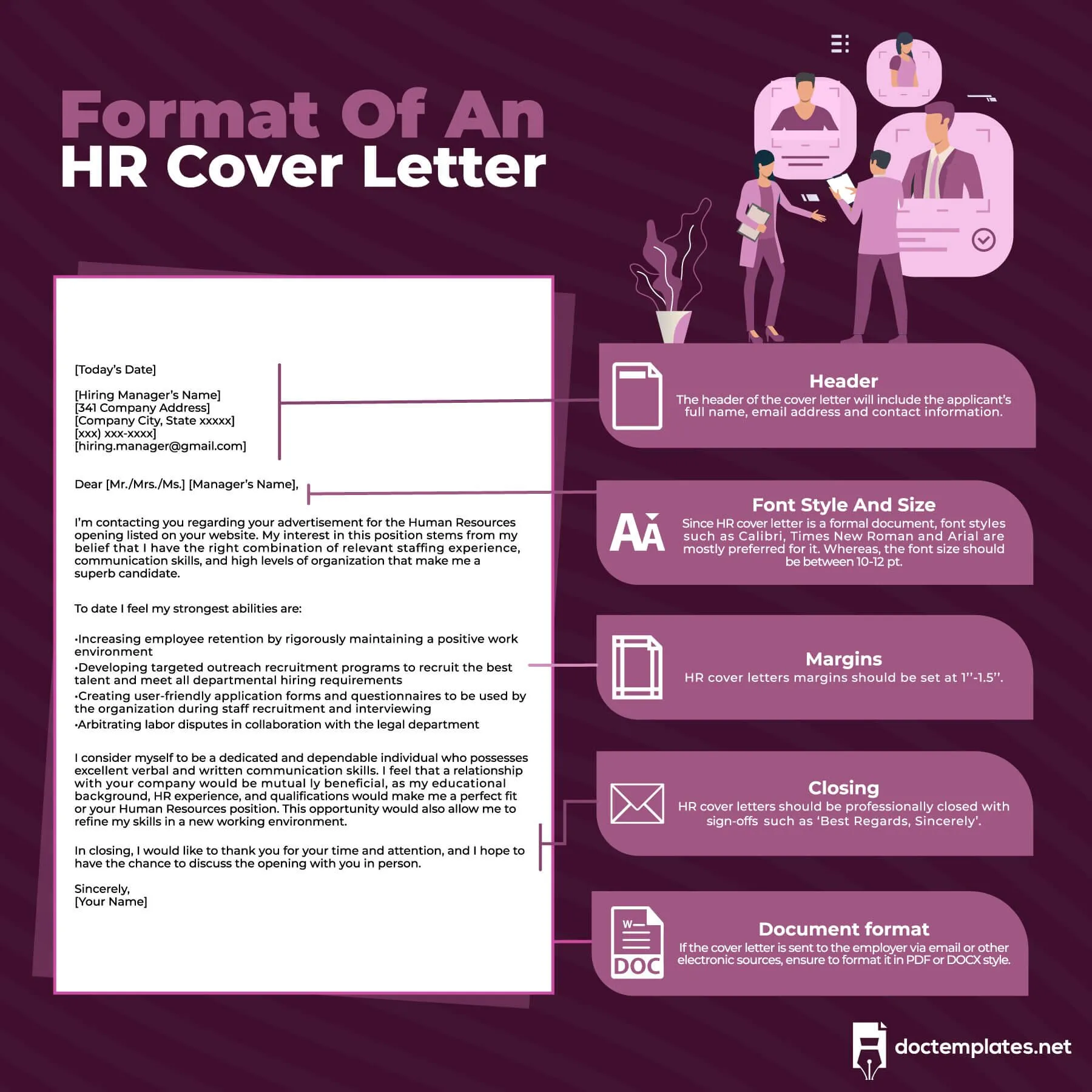What is a Cover Letter HR and Why is it Important
A cover letter is a crucial document that accompanies your resume when applying for HR positions. It serves as your first introduction to a potential employer, allowing you to showcase your personality, skills, and enthusiasm for the role. Unlike a resume, which provides a factual overview of your experience, a cover letter gives you the opportunity to tell your story, explain your career aspirations, and demonstrate why you are the perfect fit for the company and the specific HR position. In the competitive field of human resources, a well-crafted cover letter can be the key differentiator that sets you apart from other applicants. It’s your chance to make a strong first impression and convince the hiring manager to invite you for an interview. Skipping this step or submitting a generic cover letter is a missed opportunity to highlight your unique value and professional strengths. This is your first shot to show your value.
The importance of a cover letter in HR extends beyond simply summarizing your resume. It demonstrates your communication skills, your attention to detail, and your understanding of the specific requirements of the HR role. It also allows you to address any potential gaps in your resume, explain career transitions, or highlight experiences that are particularly relevant to the position. Moreover, a cover letter helps you showcase your personality and passion for human resources, which is essential for building relationships and creating a positive work environment. By taking the time to create a compelling cover letter, you are showing the employer that you are serious about the opportunity and invested in the company’s success.
Key Elements of a Stellar HR Cover Letter
A stellar HR cover letter is more than just a formality, it’s a carefully crafted document that strategically showcases your skills, experience, and personality. It should begin with a professional greeting, such as “Dear [Hiring Manager Name],” if possible. The opening paragraph should immediately grab the reader’s attention by stating the position you are applying for and expressing your enthusiasm. The body of the cover letter is where you provide specific examples of your skills and accomplishments. Use the job description as your guide and tailor your examples to highlight the most relevant qualifications, showcasing your ability to contribute to the company’s goals. Remember to include a strong call to action, such as expressing your availability for an interview or thanking the reader for their time and consideration. Lastly, proofread your cover letter meticulously to eliminate any errors in grammar or spelling. This is a reflection of your attention to detail, which is essential in HR.
Highlighting Skills and Experience
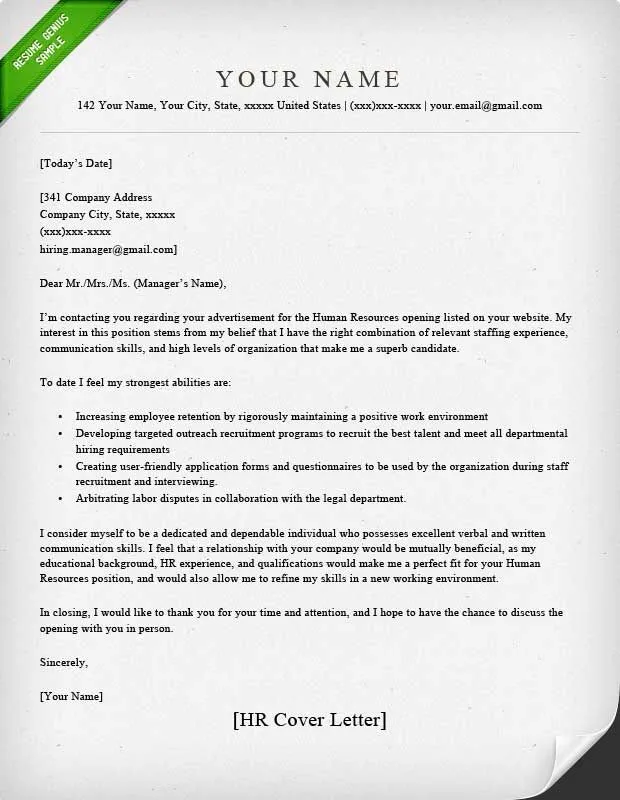
When crafting your HR cover letter, it is crucial to effectively highlight your skills and experience. Start by carefully reviewing the job description and identifying the key requirements and qualifications that the employer is seeking. Then, select the skills and experiences from your background that directly align with those requirements. For example, if the job description emphasizes experience with employee relations, provide specific examples of your successes in this area. This could involve resolving conflicts, conducting investigations, or developing and implementing policies. Be sure to quantify your achievements whenever possible, such as by stating the percentage increase in employee satisfaction or the number of grievances resolved. Use action verbs to describe your responsibilities and accomplishments. Words like “managed”, “implemented”, “developed”, and “streamlined” help to make your experience more engaging and impactful.
Quantifying Achievements
In the realm of HR, quantifying your achievements can significantly enhance the impact of your cover letter. Rather than simply stating what you did, provide concrete evidence of your accomplishments. Use numbers, percentages, and data points to demonstrate the tangible results you achieved in your previous roles. For example, if you successfully reduced employee turnover, state the percentage decrease achieved during your tenure. If you implemented a new training program, provide the number of employees trained and any associated improvements in performance metrics. These data-driven examples make your achievements more compelling and demonstrate your ability to make a real difference in the workplace. Always back up your claims with specific details that prove your capabilities.
Demonstrating Passion for HR
A successful HR professional is not just skilled but also passionate about their work. Showing your enthusiasm for the field of human resources in your cover letter is key to making a lasting impression. In your opening paragraph, clearly state your excitement for the specific role and the company. In the body of your letter, explain what aspects of HR you find most compelling. This might involve highlighting your interest in employee development, diversity and inclusion initiatives, or creating a positive company culture. Demonstrate that you have researched the company and understand its values and mission. This will convey that you are truly interested in becoming a part of their team. Share your career goals and how this opportunity aligns with them. By connecting your passions with the company’s needs, you can create a powerful cover letter that resonates with the hiring manager.
Formatting and Presentation Tips
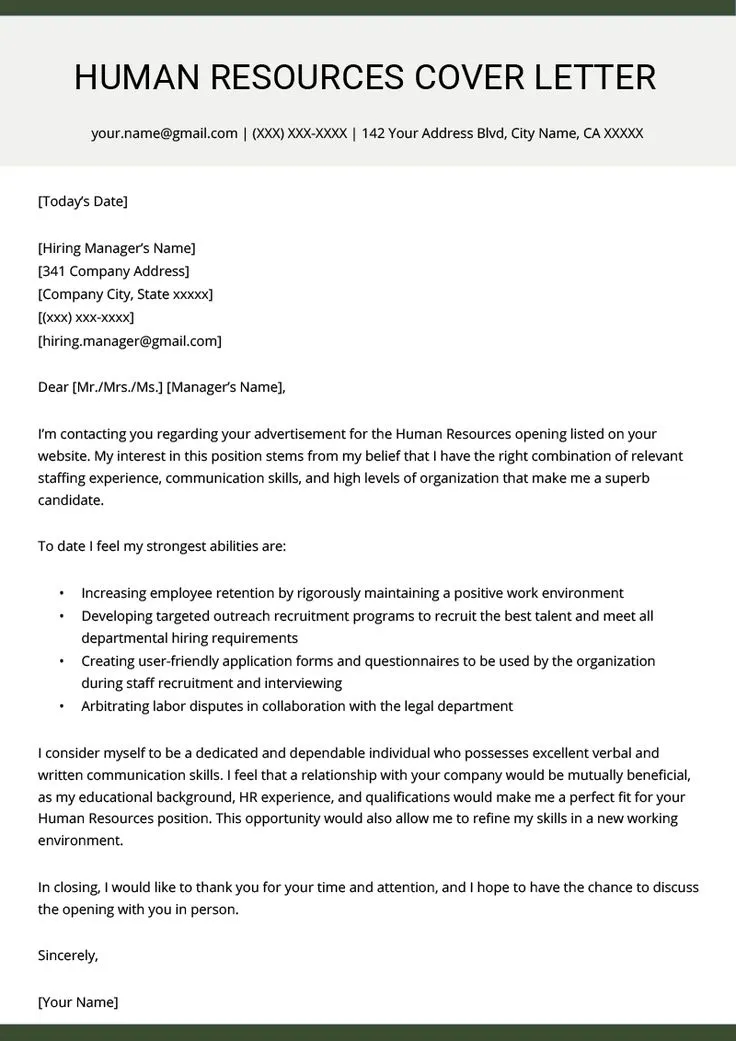
The formatting and presentation of your HR cover letter are just as important as the content itself. Start with a clean, professional format. Use a standard font like Times New Roman, Arial, or Calibri, and maintain a consistent font size (11 or 12 points). Ensure that your cover letter is well-organized with clear headings, paragraphs, and ample white space. This makes the document easy to read and visually appealing. Keep your cover letter concise, ideally no more than one page. Use bullet points to highlight key accomplishments and skills to make them stand out. Proofread your cover letter meticulously for any errors in grammar or spelling. It’s also a good idea to have someone else review it. Use appropriate business letter format, including a formal salutation and closing. Make sure you save your cover letter as a PDF to maintain its formatting. This will ensure that the document appears the way you intended.
Tailoring Your Cover Letter for Specific Roles
Generic cover letters are easy to spot. To make your cover letter stand out, tailor it to each specific HR role you apply for. Begin by carefully reviewing the job description and identifying the key requirements, skills, and qualifications the employer is seeking. Research the company’s mission, values, and culture to understand its needs and priorities. In your cover letter, customize your content to address these specific requirements. Use the same keywords and phrases from the job description to show that you are a good match for the role. Highlight the most relevant experiences and skills from your background. Explain how your qualifications align with the company’s needs. By tailoring your cover letter, you will show the hiring manager that you are serious about the role and that you have taken the time to understand their specific requirements.
Analyzing Job Descriptions
Analyzing job descriptions is a critical step in creating a compelling HR cover letter. Start by carefully reading the entire job description to understand the role’s responsibilities, required skills, and qualifications. Highlight the key requirements and identify the most important keywords and phrases. These are the terms you should incorporate into your cover letter to demonstrate your suitability for the position. Pay attention to the specific duties and expectations outlined in the description. Then, reflect on your own skills, experiences, and accomplishments. Identify instances where you have successfully demonstrated the required skills or handled similar responsibilities in the past. Use these examples to show the hiring manager that you can excel in the role. Tailoring your cover letter to the job description will demonstrate your attention to detail and your understanding of the role. This increases your chances of getting noticed.
Customizing Content
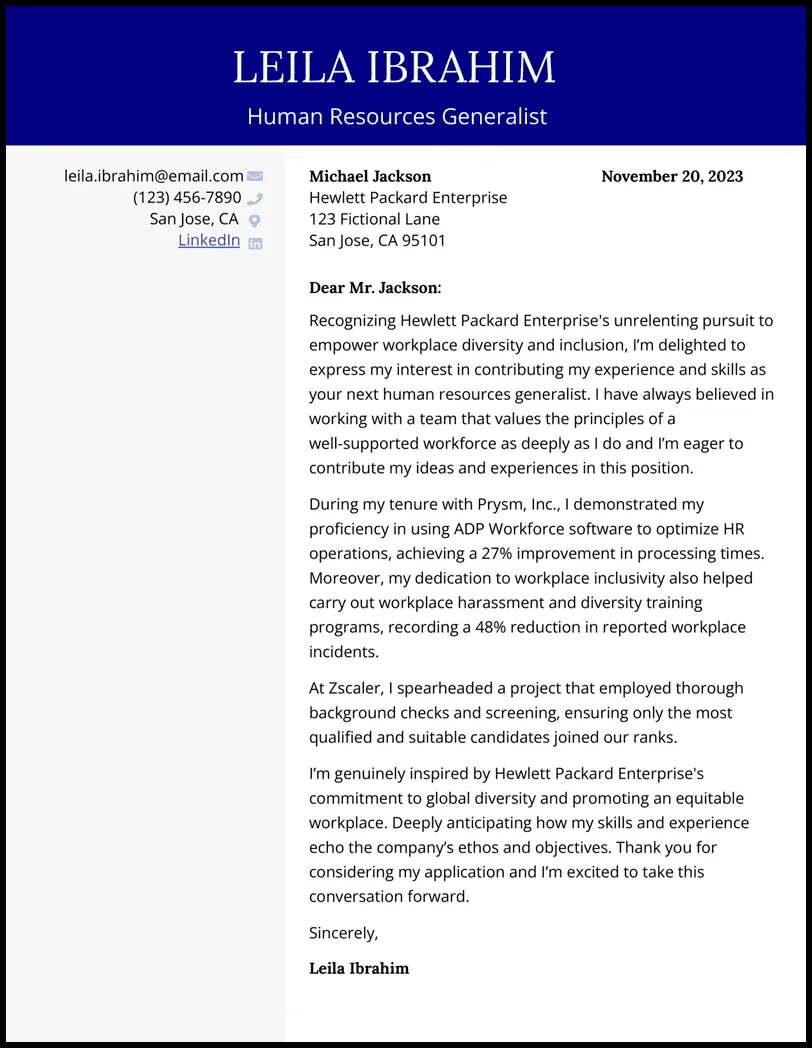
Customizing the content of your HR cover letter is a key factor in showcasing your individuality and value. Avoid using a generic template and make sure that every part of your cover letter reflects your unique experience, skills, and personality. Instead of simply listing your responsibilities, provide specific examples of your achievements and quantify your accomplishments whenever possible. For example, mention a time you improved employee retention by X%, or decreased the time-to-hire by Y%. Show that you have researched the company and understand its mission and values. Tailor your letter to showcase how your skills and experiences align with their needs. Be sure to personalize your cover letter with a unique story or anecdote that demonstrates your passion for HR and your commitment to creating a positive work environment. By customizing your content, you will demonstrate that you have taken the time to understand the role and the company.
Common Mistakes to Avoid
Even the best HR professionals can make mistakes when writing cover letters. One common mistake is using a generic cover letter that is not tailored to the specific role or company. Another is failing to proofread the letter for grammar, spelling, and punctuation errors. Such errors can damage your credibility. Avoid being too wordy or using jargon, which can confuse the reader. Instead, keep your cover letter concise and use clear, concise language. Avoid negativity and focus on your positive attributes and accomplishments. A common error is not highlighting your most relevant skills and experiences. Make sure you address the key requirements outlined in the job description. Avoid simply repeating your resume, instead, use the cover letter to expand on your experiences and show your personality. By avoiding these common mistakes, you can significantly improve the impact of your cover letter.
Proofreading and Editing
Proofreading and editing are crucial steps in creating a polished and professional HR cover letter. After you have written the first draft, take the time to thoroughly review your work. Check for any errors in grammar, spelling, punctuation, and sentence structure. Use a grammar and spell-checking tool. However, these tools may not catch all the mistakes. Read your cover letter aloud to ensure that it flows smoothly and makes sense. Look for awkward phrasing or repetitive sentences. Ask someone else to proofread your cover letter. A fresh pair of eyes can often catch errors that you may have missed. Consider it a sign of your attention to detail and commitment to quality. A well-proofread cover letter makes a strong impression and increases your chances of getting invited to an interview.
Finalizing and Submitting Your Cover Letter
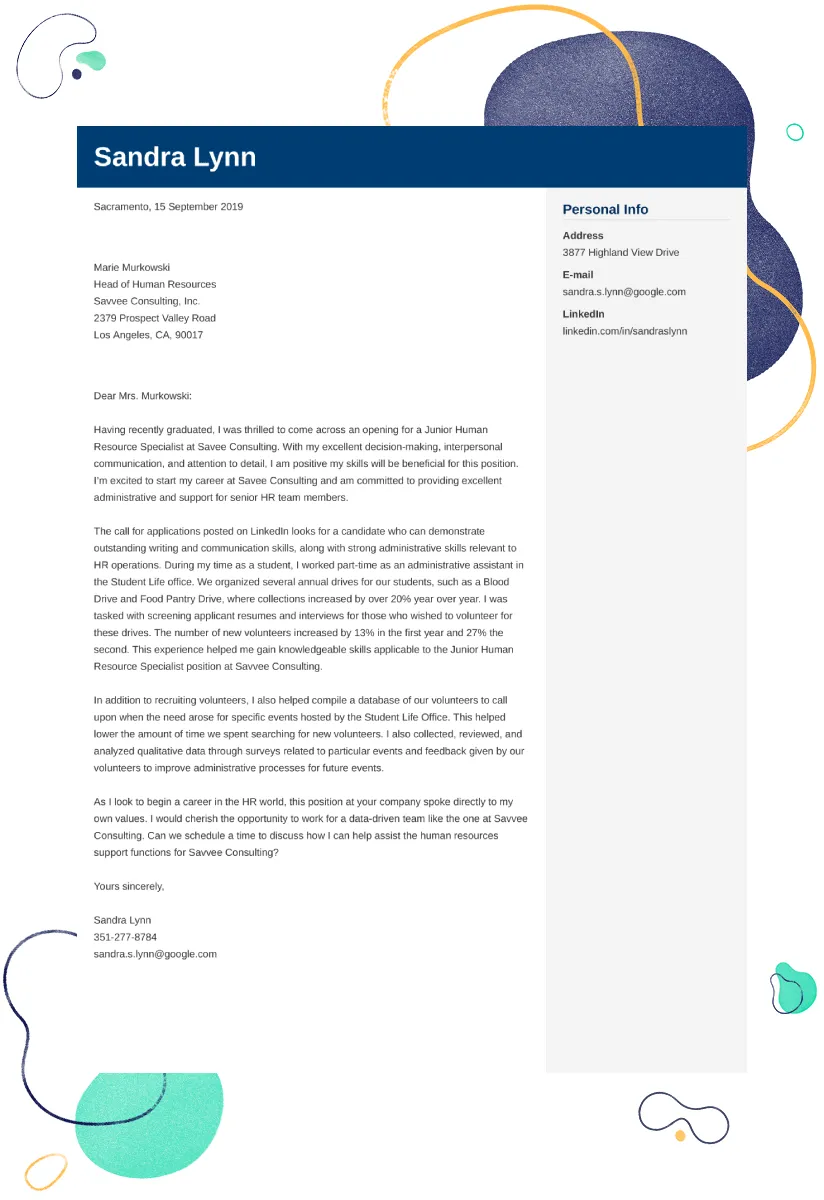
Once your HR cover letter is finalized, it is essential to follow specific guidelines when submitting it. Make sure your cover letter is formatted correctly, and that the font and spacing are professional. Save your cover letter as a PDF to maintain its formatting across all devices. Always address your cover letter to the hiring manager by name, if possible, to show that you have put in the effort. If the job posting provides specific instructions for submitting your application, follow them carefully. This is your last chance to make a good impression. Always send your cover letter and resume in the same email or through the same online portal. In your email, include a brief message expressing your interest in the role and your enthusiasm for the company. After submitting your application, follow up with the hiring manager to express your interest in the role. This shows that you’re passionate about the opportunity and willing to go the extra mile. By following these steps, you can maximize your chances of landing an interview.
In conclusion, the creation of a compelling cover letter is an essential part of the HR job application process. By following these tips, you can create a cover letter that highlights your skills and experiences, demonstrates your passion for the field, and sets you apart from the competition. Remember, your cover letter is a chance to showcase your personality and prove that you are the perfect fit for the role. Take the time to craft a well-written cover letter that opens doors to a successful career in HR. By following these best practices, you are well on your way to making a great first impression and securing your dream job.
